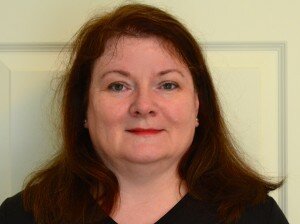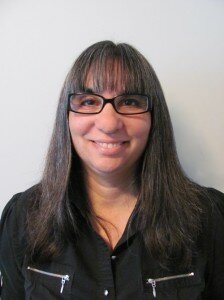 By Karyn Ross, Leslie Henckler and Mary Osmolski
By Karyn Ross, Leslie Henckler and Mary Osmolski
I have to admit that the possibility of writing an article about women in lean to celebrate Women’s History Month really intrigued and excited me. Why? First of all, because I think that when we hear the words lean or Toyota Production System (TPS), it is easy to automatically picture a world exclusively of men: men working – and improving – manufacturing processes. But in my experience, I’ve met just as many (or more) lean practitioners who are women. Since my teacher – a woman – was also taught by a woman – the story of how and what we each learned on our interconnected journeys is the shared story of a proud lineage of three generations of women in TPS.
MARY OSMOLSKI

Mary Osmolski
In the early 1990s Mary, an accountant by training, was working on inventory reduction for The Stanley Works using demand flow technology (DFT), an Americanised version of TPS, she learned while working on special projects for Moen Faucets. In 1997, The Stanley Works hired John Cosentino, formerly of Danaher, UTC and Wiremold, as VP of operations and Mary became director of Stanley’s lean manufacturing program.
At Danaher, John Cosentino had learned TPS from Shingijutsu, a consulting company started by Mr. Iwata, a former member of Taiichi Ohno’s Autonomous Study Group. At The Stanley Works, Shingijutsu sensei, Mr. Nagamatsu and Mr. Nakao, became Mary’s teachers and mentors: “Mr. Nakao was demanding and impatient and always asked questions, rarely explained anything. Mr. Nagamatsu was so humble and a patient, generous teacher who would spend as much time as needed helping you work through an issue. Learning from both was invaluable.”
As well as teaching Mary the tools of TPS, Shingijutsu also taught her the power of the question: “After years of watching the Japanese sensei, I noticed they never argued with a group about whether something was possible. They just always asked a question. What I learned is that a soft ‘why not?’ or ‘what if?’ or ‘is it possible to get another x %?’ seemed to motivate teams more than if they were just told what to do.
“When you lead a TPS implementation, you don’t need to know all the answers, you just need to ask the right questions.”
Shingijutsu taught Mary to ask questions and implement tools, but it was her experience working with bottom line, results-driven American companies, and her training as an accountant, that taught Mary that for a TPS implementation to be successful, the results needed to show on the financial statements. When Mary moved to Kodak to implement TPS, she brought with her the knowledge – and ability – to use TPS as a system to achieve actual financial results by asking questions.
LESLIE HENCKLER

Leslie Henckler
In the mid 1990s, Leslie was a reliability engineer at Kodak working on developing programs to help the photo-chemicals division do predictive maintenance on equipment. When the photo-chemicals division began participating in Kodak’s lean pilot, Leslie worked with the division to try to implement the lean tools they learned from reading books. Although the pilot made some progress, actual results were spotty. Hearing Kodak had hired Mary as the company’s TPS leader, Leslie reached out to Mary for help: “Mary came over to the photo- chemicals business and we went to gemba and I explained what I was trying to do. Mary was so kind and never laughed at what we were doing, because all we were doing was trying to implement tools. We weren’t learning how to think. Mary began the long and arduous process of teaching me how to think. And how to organise my thoughts around business results and not tools.”
After the pilot, when Mary started the colour film flow office, Leslie went to work for Mary. Mary and Shingijutsu became Leslie’s mentors. Working with Mary and Shingijutsu on improving changeover times globally, Leslie was responsible for coordinating improvement efforts, and mentoring team leaders in seven countries. Like Mary, she learned that the best way to teach people to think was by asking questions: “I was forced to learn as much as I could so that I could mentor others. The harder the problems were to solve, the better the questions that they asked and the better I became at asking questions back to drive improvements.”
After working in colour film flow for years, Mary and Leslie were asked to lead TPS in non-manufacturing areas for Kodak such as HR, IT, accounting, finance and sales.
“Although it might seem like it would be different from manufacturing, asking questions to learn, using the tools of TPS that Shingijutsu taught us, and tying improvement efforts to financial results, worked exactly the same in non-manufacturing processes,” says Leslie.
In 2006, Leslie left Kodak, taking the experience she had implementing TPS in a non-manufacturing environment to lead process improvement at Paychex, a third party payroll and human resources outsourcing provider.
KARYN ROSS

In 2006, I also found myself working for Paychex as a payroll specialist in the new client department. An artist by training, if anyone had suggested that I would be working in customer service in a large corporation, I probably would have laughed at them. Nonetheless, in 2006, that’s where I was. In 2009, while trying to solve a problem in a process, a manager suggested we have a “kaizen”. I had never heard of kaizen before; however, after reading a number of books, I convinced management to let me start a committee made up of people who executed the processes, and who knew what the problems, and possible countermeasures were, to work together to improve processes and results for our customers and our company.
I read books, learned about tools, and tried things like process-mapping and very basic time studies with my team. However, we had spotty results, because I didn’t know how to put everything together; I didn’t know how to think. Until, that is, I met Leslie, in 2010. The very first thing that Leslie taught me was what Mary had taught her: tie all process improvement efforts to business results. Leslie also taught me how to ask questions, as Shingijutsu and Mary had taught her, by asking me questions.
Finally, Leslie taught me to think by teaching me to use PDCA (plan-do- check-act) on a daily basis. As I learned to think by answering Leslie’s questions and ask questions of the team members I was working with, I learned that
TPS is not about tool use, but about developing people’s creative problem- solving abilities to improve processes to create measurable, sustainable business results. Leslie taught me: if the only answer is “it depends”, then the most important thing is to think, and in order to think, you need to ask questions and learn from the answers.
In 2012, I left Paychex and have now worked with a number of other service organisations; and wherever I go, I am always confident in my ability to think and to learn by asking questions, because I always bring my teacher, and her teacher’s teachings along with me.
SHARED EXPERIENCES
From Taiichi Ohno, to Shingijutsu, Mr. Iwata, Mr. Nakao, and Mr. Nagamatsu, through Mary, to Leslie, to me. Three women learning to think and teach by asking questions so that others can also learn to think and solve problems to create measurable, sustainable business results.
Mary and Leslie spent most of their careers working in manufacturing. Mine has been entirely in services.
And although one might assume that it would be harder for a woman to convince people to try new approaches and change their processes (especially in manufacturing), none of us have found that to be the case. As Leslie explains: “It was ‘expected’ that as a woman, you wouldn’t know things. And by asking questions, and having an open, inquiring mind, I could just let them teach me at the same time they were figuring out a better way.”
Mary says: “TPS is fundamentally about asking people to change. Change is never easy. TPS taught me that if you want lasting, sustainable change you need to work with a group; not mandate to a group. In order to do that, I had to really learn about people and take the time to understand where they were coming from and what was important to them. I also learned that asking a question is always more effective than shutting down and arguing. Once I did that I could always find a common ground. That has been a life lesson.”
My experience in services has been the same: I’m a middle-aged, non- threatening, grey-haired lady who is just asking questions and learning from the people I work with as they improve their work for themselves and their customers. All three of us have also found that, perhaps because we are women, the role of the lean leader – leading by asking questions and serving the team instead of telling people what to do – comes naturally.
So that’s our story, three generations of women learning and teaching TPS. Thankful for all of our teachers (Ron Taylor, Pascal Dennis, the lean offices at UTC and Wiremold, LMJ board member – Jeff Liker, and many others.) Thankful for all the team members we have worked with who have taught us along the way, for as Leslie reminds us: “I’ve learned as much from the people I’ve coached and mentored as I’ve taught and given to them. The more people ask you questions, the more your skills get bigger and deeper as you try to help them.” Most of all, we are thankful for the opportunity TPS has given us to learn.


what a inspiring article..it makes a middle age lady like me think about the things I can accomplish.